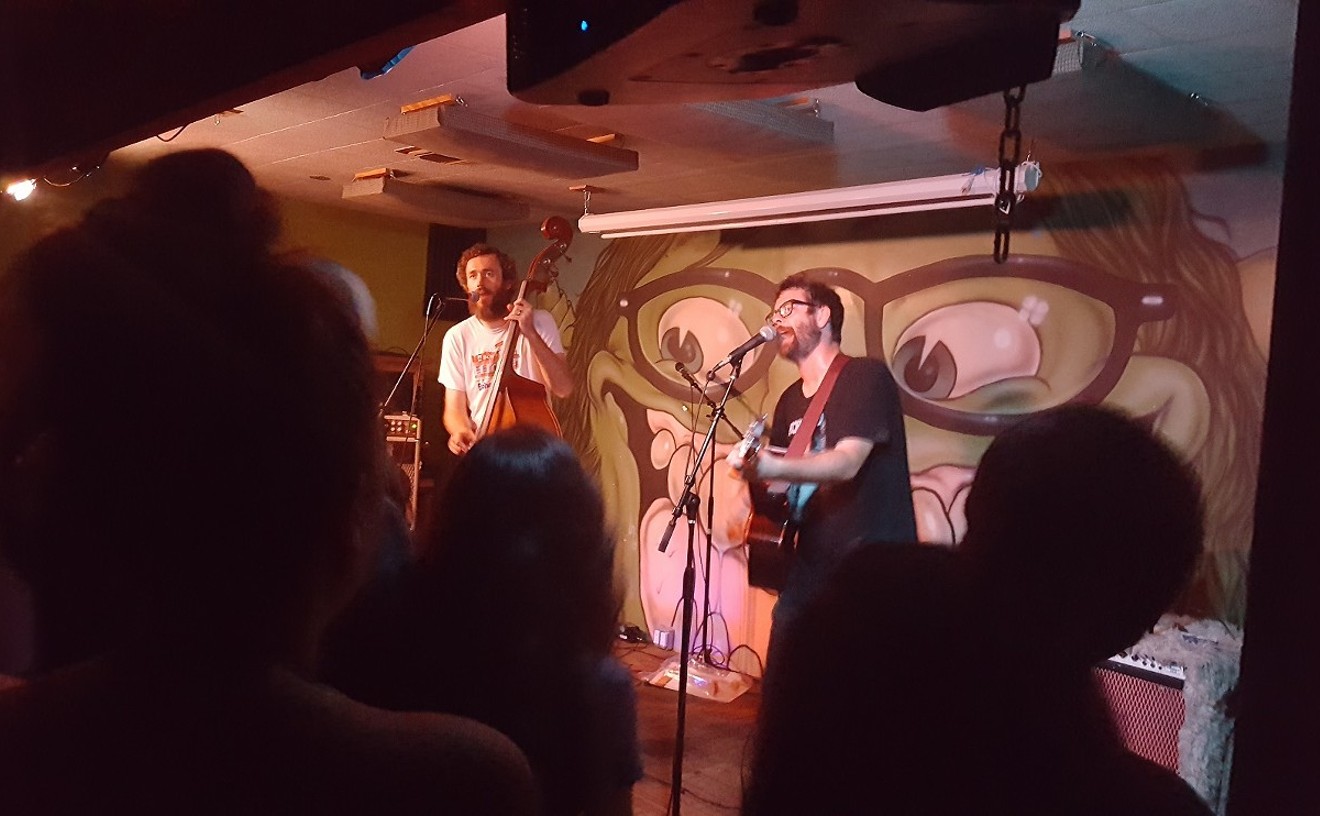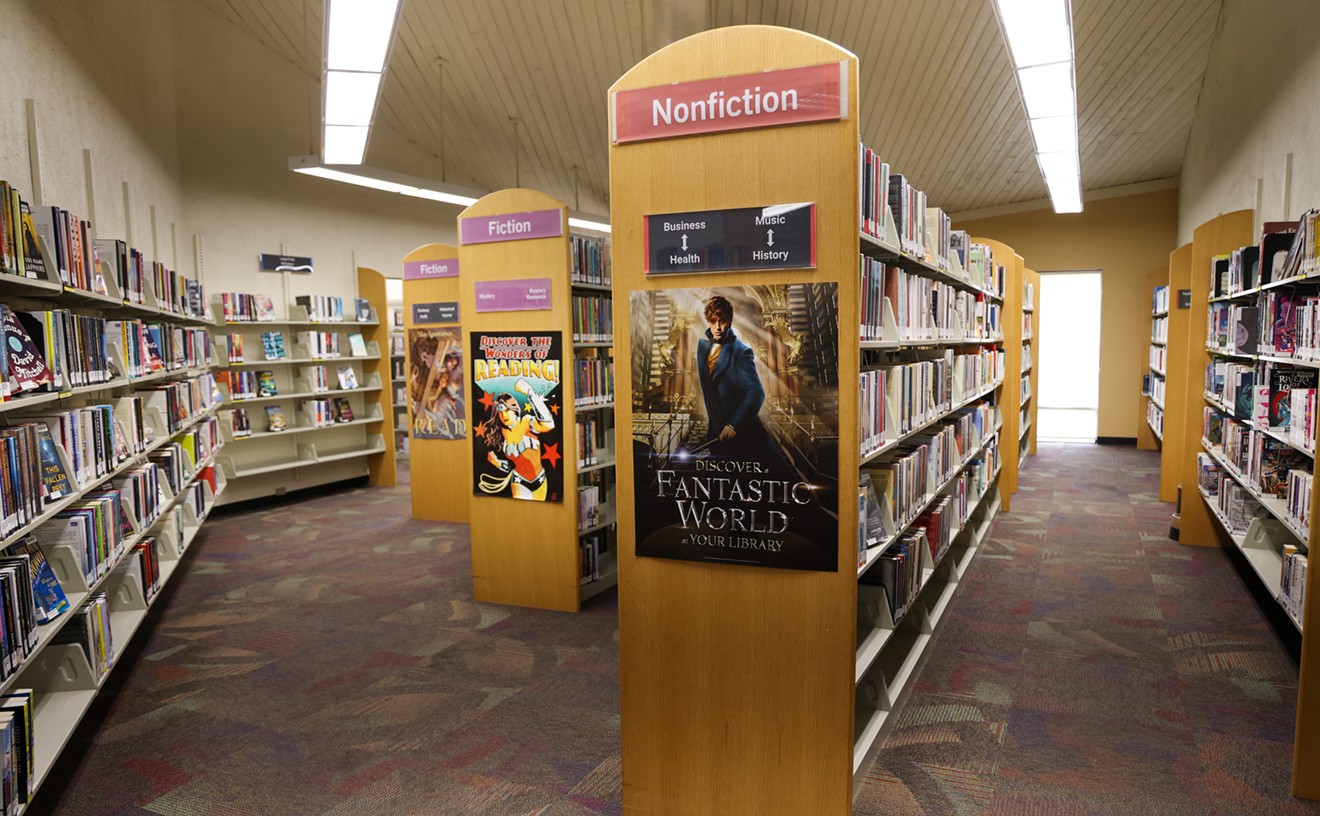For more of the best people, places and things to do in Phoenix, check out our 2015 Best of Phoenix awards.
Ethan Misiewicz is throwing things into the canal. He came across his old Easter basket at the back of the coat closet this morning, and the only good use for stale jelly beans, he's decided, is pitching them into the lake.
"But we don't got a lake," the 8-year-old explains to a stranger who's stopped to chat. "We got a canal."
Ethan's older stepbrother is fishing off the bank of the canal that runs behind his father's house near 52nd Street and Indian School on a hot day in August. His stepmother, Judy, sits under a nearby tree listening to a podcast about the recent presidential debates. "We come here a lot, on the weekends, just to hang out," she says. "More when it's cooler, but these two are starting back to school and they wanted one last fun thing before they do."
Ohio has Lake Erie. Italy has Trevi Fountain. Canada has Niagara Falls. And we have the Valley of the Sun Canal System. Originally created by the Hohokam to water crops, the canals have evolved over the past hundred-plus years into an inner-city waterway that snakes through residential and business districts all over the Valley. But not just any old waterway. Our canal system is the sort that inspires advocacy groups, that has city planners worried about canal-bank traffic, that is awarded millions of dollars for aesthetic improvements to make it something more than a big ditch full of water necessary for our survival.
The canals, these planners and ad hoc groups are telling us, are the next big thing. They're what will help Phoenix finally become a world-class city, with public art-centric projects like Scottsdale's Canal Convergence and the city of Phoenix's Canalscape and lower-profile projects like Mesa's Porter Park multi-use path.
"We have more canals in the Valley than Venice and Amsterdam combined," says Diane Brossart, president of Arizona Forward, a business-based public interest group that's among the loudest advocates for canal enhancement. "Everyone here is beginning to see how we might use the canals to improve our lives here, and the funding for that is beginning to roll in."
No kidding. All told, the county, Salt River Project, and municipalities have invested more than $60 million to improve existing canal recreation facilities in the past several years. It's about time, Brossart says. A 1964 recreation agreement between the U.S. Bureau of Reclamation and Maricopa County asked for the development of facilities conducive to hiking, picnicking, bicycling, and horseback riding along the canals. The recently extended agreement was the first of its kind in the country. More than 50 years later, the project is just building up steam.
About 150 years ago, Jack Swilling put the hot, unyielding desert on notice: "I don't care that you've got no natural water to speak of, that the cactus is your best attempt at a tree, that the roadrunner is the only bird I've laid eyes on since I got here. I want to live in the desert. And I want plum trees and a vineyard and a pond with ducks on it."
He got them, eventually. First, though, Swilling, always referred to in history books as the founder of Phoenix, needed a bunch of water. In 1867, he was a retired Confederate soldier living in Wickenburg who launched the Swilling Irrigation Canal Company to dredge the long-dormant 135 miles of canals first dug by the Hohokam about 1,200 years earlier and abandoned by them 800 years later after a long drought. Swilling's venture jump-started Arizona's commercial agriculture and made him a wealthy man. He settled in the East Valley (at what is now 32nd Street and Van Buren), where he established a farm and built a 4,700-square-foot home. He named the farming estate Swilling's Castle and installed a vast orchard of exotic and non-indigenous fruit trees, a heat-sensitive vineyard, and a pond. With ducks he had imported from upstate New York.
Thumbing our nose at drought has become a local tradition, and Swilling's man-made lake became a precursor to manufactured bodies of water all over the Valley, most notoriously Tempe Town Lake, with its paddle boats and sun-fishing, and Gordon Baker's various waterfront residential projects in Tempe, Ahwatukee, and beyond. And of course there's Big Surf, among the city's most dubious — and inarguably most successful — achievements. The giant water park, opened in 1969 and profiled in Time, Life, and Sports Illustrated that same year, is a 2.5-million-gallon swimming pool tricked up with an ocean-tide mechanism that produces a wave every three minutes. Its waterslides and "Hurricane Falls" are banked by something called Waikiki Beach, made from sand that is definitely not Sonoran. But what's a desert town without a beach?
Our canal system, at least, has a purpose greater than fly-fishing or catching a pretend wave: providing flood irrigation of residential and commercial property throughout the Valley by way of a lateral waterways system connected to the canals themselves.
"Smart people are looking at the canals and asking how else we can make use of them," says Tim Eigo, chair of the Downtown Voices Coalition, a community advocacy group. "I won't be surprised if, in 10 years, someone figures out a way to use them to lower the heat index."
In the meantime, our canal system is becoming a nationally recognized desert-inspired home to some of the most compelling visual art in the country — one that's so groovy, it's even got its own vocabulary, with phrases like "aesthetic waterways" and invented words like "canalscape."
"That one gets tossed around a lot," according to Jim Duncan, an engineering analyst for SRP who manages the canal's multiple-use program. "Someone came up with 'canalscape' several years ago, and it stuck. It's become a generic term for anything to do with canals."
These days, everything seems to do with canals. There's the city of Phoenix's own Canalscape, a much-touted and super-funded project that's still in the planning stages. Although printed materials for the project trumpet "vital hubs of urban activity where canals meet major streets" and "more comfortable recreational corridors, non-motorized transportation options, and alterative energy generation," the specifics are still being hammered out by SRP and Arizona Forward, which is overseeing aspects of the project. Florida artist Michael Singer has been selected to create art that presumably will have something to do with the desert and its waterways, and design firm T. Y. Lin is designing walkways and biking paths.
Phase One of Canalscape, which will stretch from Seventh Street to Central Avenue just south of Camelback and include the campuses of Central High, St. Francis, Xavier, and Brophy Prep, is expected to wind up in September of next year. Funded by SRP to the tune of $4.2 million, the venture was augmented by an additional $700,000 from the city, all of it earmarked for the public art component. The money also would pay for crosswalks and stoplights where the waterway meets major roads, a paved pathway, lighting, and public-art installations. Phase Two, not yet funded, will extend the beautification toward Interstate 17.
It's likely that the city has taken note of Scottsdale's ongoing success in renovating its own downtown canal-fronted land. Hoping to get people thinking about the canals as something more than "big ditches full of water," Scottsdale hooked up with SRP and Scottsdale Public Art three years ago to create Canal Convergence, a series of art events that, Duncan says, has residents ruminating on the history of the canals. They come to see the art, he claims, and after looking at the canals, begin to wonder what they're for and how they're filled.
Presumably, these people go home and Google "Arizona canal history" and read up on our local waterways. "Golden Waters" is the most recent art installation, on display at the Scottsdale Waterfront through October. The $43,000 piece by New York artist Grimanesa Amoròs is the fifth major Scottsdale Waterfront art project since the program's inception in 2012. Its sculpted LED tubing system, which "celebrates a union of light and water," runs along the canal just west of the Soleri Bridge.
In its first year, Canal Convergence hosted about 5,000 people, according to Kirstin Van Cleef, project manager at Scottsdale Public Art. This year's event played host, she reports, to eight times as many.
"Canals were always thought of as functional, period," Van Cleef says. "Who even looked at them? Now, canals are about culture. We're treating ours as a way to bring communities together and as a platform for public art installations." Those installations have included work by Florida's Joy Holland and San Francisco artist Karrie Hovey; UK artist Bruce Monro, known for his colossal electric light sculptures, is up next. Local artists including Jeff Zischke and Saskia Jorda, who covered the Soleri bridge paths with wooden birds, have also been featured.
"I love canals!" Brossart says giddily. She moved here from Michigan in the '80s and began looking around for water. "For a long time now, we've turned our backs to the canals, treating them like alleyways. That's changing." Scottsdale Waterfront is a huge example of how developing the banks of a canal can get the community to engage in the desert, she says. "But even putting up a shade structure and a bench along a canal is a step forward."
It's a step that the city is lately more interested in taking. Why, if the canals have been here for more than a century, are we suddenly so interested in turning them into art-filled public meeting places?
Because it's about time, Brossart says. She thinks canals are hot, in part, because she and others like her have been hollering about them for such a long time. "Downtown is developing, which wasn't true 10 years ago," she says. "Engaging the canals is part of that natural evolution of a city that's maturing and growing."
It might also be because, according to a report issued by the Phoenix Office of Arts and Culture last year, the city's monitoring systems have counted more than 750,000 people using the canals for recreation (mostly walking, hiking, and biking) each year. Or maybe, as Janet Traylor says, it's because Phoenix is "waking up" to the potential of being what she calls "a post-development society."
"We're a new city that's been mostly just building things," says Traylor, who lives in north Central Phoenix, near Murphy Bridle Path. "Now, we've got some solid financial support for putting a finer point on public spaces. And we're using it to open our eyes to something great that's been here all along."
Ethan Misciewicz is packing up his fishing gear. It's time to leave the canal bank and head home for the day.
"Did you have fun?" Ethan's stepmother asks him, glancing up from her cell phone.
"I guess," he says, tossing his empty jelly bean bag into a shiny, public art-y trash receptacle.
"Do you think we should come back next week?" she asks him, taking his hand.
"Maybe," Ethan says, glancing over at the canal. "Maybe if they get some boats or something."










